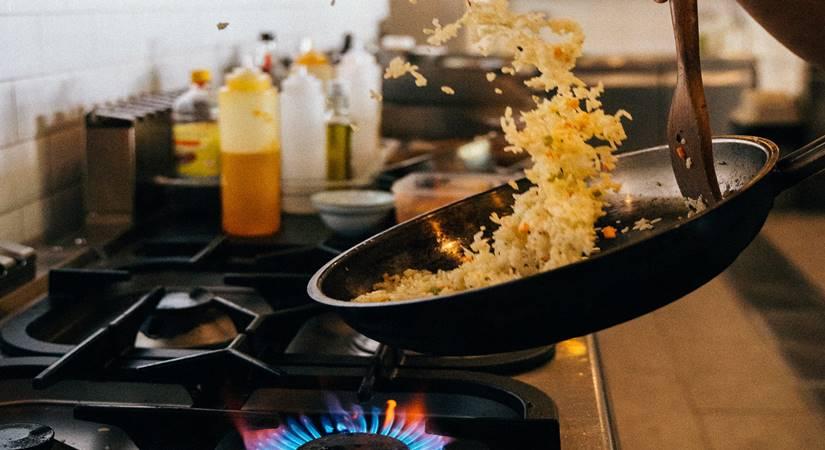The movements of chefs and kitchen staff should be synchronized, to attain a high level of efficiency. Strategic kitchen design and workflow optimization can significantly reduce the time it takes to prepare and serve dishes. This not only enhances customer satisfaction but also allows the restaurant to serve more guests with the same resources…writes Devanshi Tripathi
In the rapidly evolving landscape of the restaurant industry, the kitchen transcends its traditional role as a mere cooking space; it emerges as a dynamic nexus of efficiency and organization. As the global economy grapples with uncertainties, adaptability becomes paramount for businesses in the Food and Beverage sector to ensure economic resilience. Consequently, the imperative to streamline kitchen operations ceases to be merely a matter of convenience; instead, it transforms into a strategic initiative geared towards enhancing sustainability and bolstering the overall profitability of the restaurant business.
In this context, Devanshi Tripathi, the Founder of North Star Café, expresses her perspectives on fortifying the industry against economic challenges through the exploration and implementation of measures for kitchen efficiency. This approach is not only prudent but also represents a pivotal step in ensuring the resilience of the business.
Kitchen: The Heartbeat of a Restaurant
The kitchen is undeniably the heartbeat of a restaurant where the culinary magic takes place, breathing life into the dining experience. Beyond its functional role as a space for food preparation, the kitchen embodies the character and essence of a restaurant. It’s the creative nucleus where chefs curate flavors, textures, and majestic presentations to craft exquisite dishes that stimulate the taste buds, creating long-lasting impressions on passionate food connoisseurs. The energy within a restaurant’s kitchen pulsates with teamwork, precision, and passion, synchronizing diverse culinary talents working seamlessly to deliver a fine gourmet experience. This highlights the pivotal role of a kitchen in maintaining its status as the epicenter of a restaurant’s success, crafting not just meals but memories and elevating the entire dining journey for guests.
A Recipe for Economic Resilience
With the food-service market in India estimated to reach USD 79.65 billion by 2028, optimization of kitchen operations holds immense potential as a strategic move. Each streamlined operation, from ingredient sourcing to plate presentation, contributes to the financial benefit of establishments. Hence, the kitchen’s efficiency is a vital ingredient in the economic recipe for enduring success in the industry and here are some ways to achieve that highlighted by Devanshi Tripathi:
Inventory Management: Effective inventory management is the cornerstone of a streamlined kitchen. By implementing advanced tracking systems and technology, restaurants can monitor ingredient levels in real time, preventing overstocking or stockouts. This not only reduces waste but also ensures that resources are utilized optimally, leading to substantial cost savings.
Workflow Optimization: The movements of chefs and kitchen staff should be synchronized, to attain a high level of efficiency. Strategic kitchen design and workflow optimization can significantly reduce the time it takes to prepare and serve dishes. This not only enhances customer satisfaction but also allows the restaurant to serve more guests with the same resources.
Technology Integration: Embracing modern technology is crucial for a kitchen aiming to stand out in terms of efficiency. From automated cooking processes to smart inventory management algorithms, tech is destined to revolutionize the way 21st-century kitchens operate. Smart AI tools can also help in predicting demand, optimizing schedules and even analyzing customer preferences, allowing for better-informed predictive decisions.
Staff Training and Empowerment: Efficiency isn’t just about machines – it’s about the people who operate them. Well-trained and motivated staff can significantly contribute to kitchen efficiency. Therefore, regular training programs, clear communication channels and empowering employees to take ownership of their roles can lead to a more resilient kitchen environment.
Sustainable Practices: In the quest for efficiency, sustainability should not be overlooked. Adopting eco-friendly practices, such as reducing single-use plastic, composting organic waste and using locally sourced ingredients, not only aligns with today’s consumer values but also contributes to minimizing long-term environmental impact and associated costs.
In the challenging market of the food service industry where many external factors can impact profit margins, kitchen efficiency is becoming a necessity. By focusing on inventory management, optimizing workflows, integrating technology, investing in staff training and adopting sustainable practices, restaurants can build a resilient foundation for economic success. A well-oiled kitchen not only serves delicious meals but also ensures that resources are utilized wisely, contributing to long-term economic stability. As the saying goes, a stitch in time saves nine – investing in kitchen efficiency today is an investment in the economic resilience of tomorrow’s culinary enterprises.














